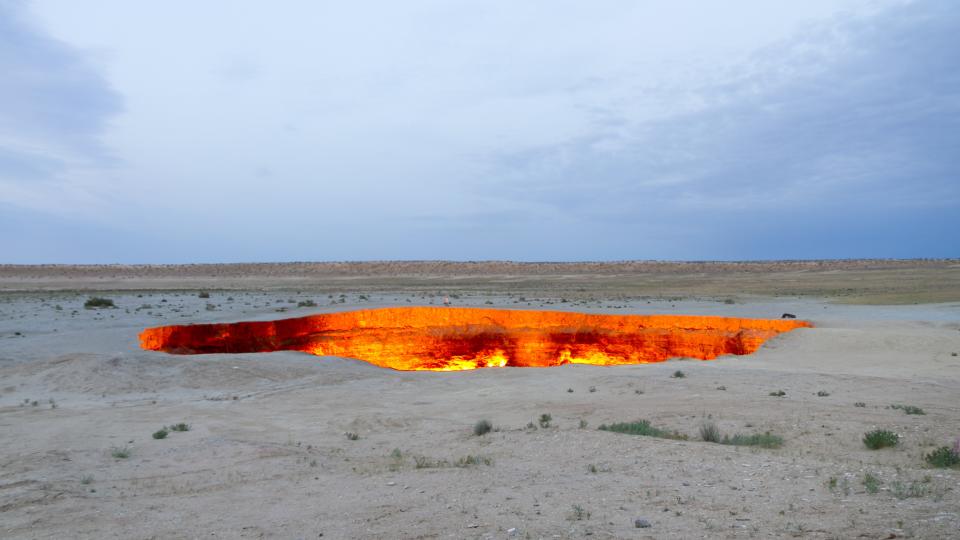Gates of Hell: Turkmenistan's methane-fueled fire pit that has been burning since 1971

QUICK FACTS
Name: The Gates of Hell
Location: Karakum desert, Turkmenistan
Coordinates: 40.252501987265276, 58.43959946915778
Why it's incredible: The entire gas crater has been on fire for more than 50 years.
The "Gates of Hell," also known as the Darvaza gas crater after a nearby village, is a methane- and fire-filled crater in Turkmenistan's desert.
There are several different accounts of when and how the Gates of Hell formed, but the most widely circulated story is that the crater opened in 1971 after a Soviet gas drilling rig accidentally hit a natural gas reservoir. (Turkmenistan was a constituent republic of the Soviet Union from 1925 to 1991.)
Related: Hot Tub of Despair: The deadly ocean pool that traps and pickles creatures that fall in
The puncture caused the ground around the rig to collapse, taking the drilling infrastructure down with it and creating a giant leak from the reservoir. As soon as the ground opened, methane gas and other noxious fumes began wafting from the crater, which is roughly 230 feet (70 meters) in diameter and 100 feet (30 m) deep. This prompted geologists to come up with a bold plan to avert a potential environmental disaster — people in neighboring villages becoming poisoned by the raw gases, for example.

Shortly after the crater opened, Soviet scientists set its walls alight, thinking the fire would burn off the methane within a few weeks before dying down. But instead, the fire kept burning.
Fifty-three years later — and despite Turkmenistan's president announcing plans to close the Gates of Hell — the Darvaza gas crater is still a raging blaze. The crater sits atop the Amu-Darya Basin, a highly productive oil and natural gas province that stretches across Turkmenistan and Uzbekistan. Huge amounts of natural gas — predominantly methane — seep through Earth's crust across the basin, so "we shouldn't be surprised [the Darvaza crater] exists," Mark Ireland, a senior lecturer in energy geoscience at Newcastle University in the U.K., told National Geographic.
The crater is likely connected to stores of flammable methane gas that provide seemingly unlimited fuel for the fire.
RELATED STORIES
—Blood Falls: Antarctica's crimson waterfall forged from an ancient hidden heart
—Eye of the Sahara: Mauritania's giant rock dome that towers over the desert
—China's 'heavenly pits': The giant sinkholes that have ancient forests growing within
The charred remains of the drilling rig are thought to be somewhere inside the crater.
The fiery glow is visible from miles away, according to Atlas Obscura, and the site has become one of the country's top tourist attractions, drawing around 10,000 visitors per year. The crater also gained internet fame in 2019, when Turkmenistan's president Gurbanguly Berdymukhamedov released a video of himself driving a rally car and performing donuts on the edge of the crater.

